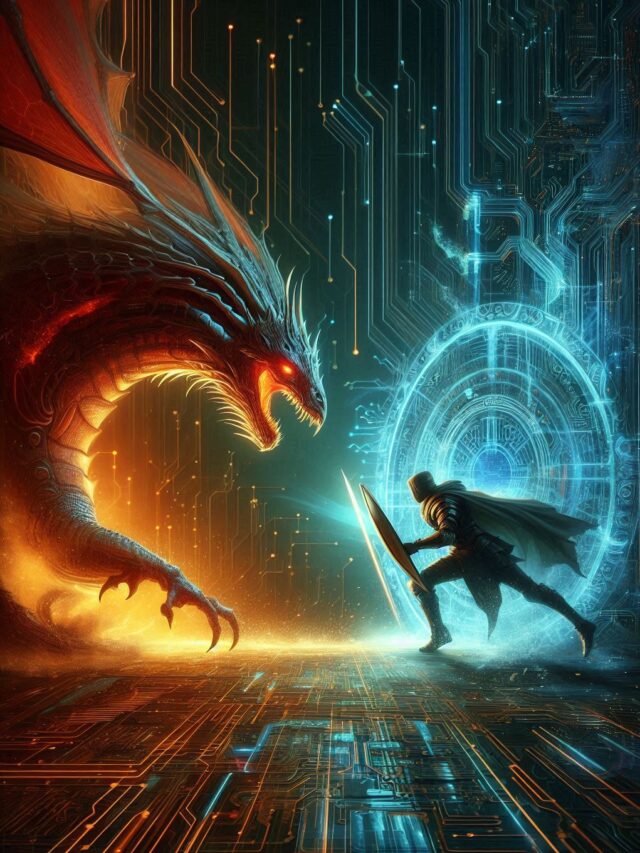In an era where artificial intelligence (AI) is revolutionizing every aspect of our lives, cybersecurity threats have evolved to unprecedented levels of sophistication. As AI cyber attacks become more prevalent and complex, the need for human vigilance has never been more critical. This article explores why human awareness and action remain our strongest defense against the rising tide of AI cyber attacks.
The AI Cybersecurity Landscape: A Double-Edged Sword
AI has dramatically transformed the cybersecurity landscape, offering powerful tools for both defenders and attackers. While AI enhances threat detection and response capabilities, it also empowers cybercriminals to create more sophisticated and elusive attack vectors.
According to a recent report by Cybersecurity Ventures, AI-powered cyber attacks are projected to cost businesses worldwide $10.5 trillion annually by 2025. This staggering figure underscores the urgent need for heightened human vigilance in cybersecurity practices.
Why Human Vigilance Matters in the Age of AI
Despite advancements in AI-driven security solutions, human judgment and intuition remain irreplaceable. Here’s why:
a) Contextual Understanding: Humans excel at interpreting complex scenarios and identifying subtle anomalies that AI might overlook.
b) Ethical Decision-Making: Humans can make nuanced ethical judgments in situations where AI may falter.
c) Adaptive Thinking: Human creativity allows for innovative problem-solving in the face of novel threats.
d) Social Engineering Defense: Humans are better equipped to recognize and resist social engineering tactics that AI may not detect.
FAQs: Human Vigilance against AI Cyber Attacks
Q: Can’t we rely solely on AI for cybersecurity?
While AI is a powerful tool, it’s not infallible. Human oversight is crucial for interpreting AI-generated insights and making strategic decisions.
Q: How can humans keep up with rapidly evolving AI threats?
Continuous education, regular security awareness training, and staying informed about the latest threat landscapes are key.
Q: What specific skills should humans focus on developing?
Critical thinking, pattern recognition, and an understanding of both human psychology and AI capabilities are essential.
The Human Factor: Key to Robust Cybersecurity
Human vigilance plays a vital role in several critical areas:
a) Phishing Detection: AI-generated phishing attempts are becoming increasingly sophisticated. Human intuition is often the last line of defense against these deceptive tactics.
b) Incident Response: While AI can detect anomalies, human expertise is crucial in coordinating effective responses to cyber incidents.
c) Policy Implementation: Humans are responsible for creating, implementing, and enforcing cybersecurity policies that govern AI systems.
d) Ethical Considerations: Human judgment is essential in navigating the ethical implications of AI in cybersecurity.
Strategies for Enhancing Human Vigilance
To strengthen human vigilance against AI-generated threats:
a) Implement Regular Training: Conduct frequent, up-to-date cybersecurity awareness programs.
b) Foster a Security-First Culture: Encourage employees to prioritize security in all aspects of their work.
c) Promote Cross-Functional Collaboration: Encourage communication between IT, security, and other departments.
d) Invest in Human Expertise: Prioritize hiring and retaining skilled cybersecurity professionals.
e) Encourage Healthy Skepticism: Train employees to question and verify before acting on digital communications.
The Future of Human-AI Collaboration in Cybersecurity
As AI continues to advance, the future of cybersecurity lies in effective human-AI collaboration. This symbiotic relationship leverages the strengths of both:
- AI’s speed and data processing capabilities
- Human intuition, creativity, and ethical judgment
By fostering this collaboration, organizations can create a more robust defense against evolving cyber threats.
Case Studies: Human Vigilance in Action
Several real-world examples highlight the crucial role of human vigilance:
- The 2013 Target data breach was initially flagged by AI systems but overlooked by human analysts, leading to significant damages.
- In contrast, the 2017 WannaCry ransomware attack was mitigated thanks to a vigilant security researcher who discovered a “kill switch” domain.
These cases underscore the importance of human oversight and action in cybersecurity.
Conclusion:
In the face of rapidly evolving AI cybersecurity threats, human vigilance remains our most potent defense. While AI offers powerful tools for both attack and defense, it’s the human element – our ability to think critically, adapt quickly, and make ethical decisions – that ultimately keeps our digital world secure. By fostering a culture of vigilance, continuous learning, and effective human-AI collaboration, we can stay one step ahead of cybercriminals in this ongoing digital arms race.








